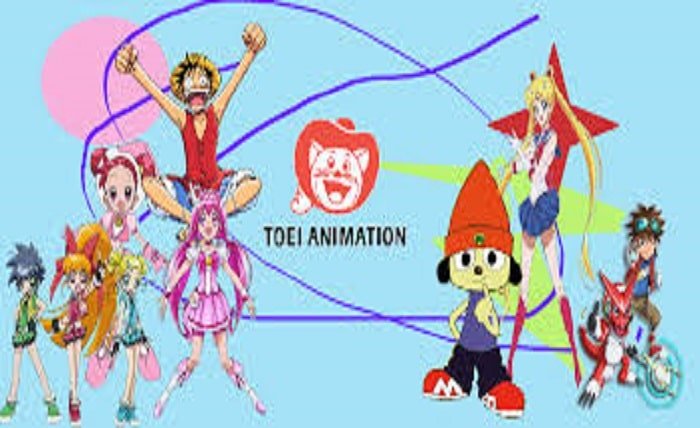Toei Animation: A Journey Through the Iconic Studio

Introduction
Toei Animation stands as a monumental figure in the anime industry, having created some of the most beloved and influential series in the genre’s history. Founded in 1948, the studio has been at the forefront of animation innovation and storytelling, leaving an indelible mark on global pop culture. This blog post will delve into the history, achievements, and impact of Toei Animation, exploring its evolution and the legacy it continues to build.
The Origins of Toei Animation
Toei Animation, originally established as Japan Animated Films in 1948, started its journey with a vision to bring unique and engaging stories to life through animation. The studio’s early years were marked by experimentation and a drive to innovate in the art of animation. By 1956, the company rebranded to Toei Animation, signaling a new era of growth and ambition.
During the 1950s, Toei Animation focused on creating animated features that would appeal to both children and adults. Their first feature film, “The Tale of the White Serpent” (1958), was a groundbreaking success that showcased the studio’s potential. This film not only set a high standard for future productions but also marked the beginning of Toei Animation’s rise to prominence in the anime industry.
The Golden Age of Toei Animation
The 1960s and 1970s were pivotal decades for Toei Animation, often referred to as the studio’s golden age. During this period, Toei Animation produced a series of landmark television shows and films that solidified its reputation as a leader in the anime industry. One of the most significant achievements was the adaptation of “GeGeGe no Kitaro” (1968), a series that became a cultural phenomenon in Japan.
Another milestone was the production of “Mazinger Z” (1972), which introduced the concept of the giant robot genre, a staple in anime. Toei Animation’s ability to innovate and adapt to changing audience tastes allowed it to produce content that resonated deeply with viewers, both in Japan and internationally.
Toei Animation’s Global Impact
Toei Animation’s influence extends far beyond Japan. The studio’s works have been instrumental in popularizing anime around the world. Series like “Dragon Ball” and “Sailor Moon” not only achieved massive success in Japan but also garnered a significant following globally. These shows introduced many international viewers to the world of anime, creating a lasting impact on global pop culture.
The international success of Toei Animation can be attributed to its compelling storytelling, memorable characters, and high-quality animation. By the 1980s and 1990s, Toei Animation had established itself as a powerhouse in the industry, with its productions being broadcast in numerous countries and translated into multiple languages.
Iconic Series by Toei Animation
Toei Animation has an impressive portfolio of iconic series that have left a lasting legacy in the anime world. “Dragon Ball” (1986) is arguably one of the most influential series produced by the studio. Created by Akira Toriyama, the series follows the adventures of Goku and his friends as they defend Earth from various threats. Its success spawned multiple sequels, movies, and a vast merchandise empire.
“Sailor Moon” (1992), created by Naoko Takeuchi, is another landmark series that revolutionized the magical girl genre. The show follows Usagi Tsukino and her friends as they transform into the Sailor Guardians to protect the world from evil. Its themes of friendship, love, and empowerment resonated with audiences worldwide, making it a cultural icon.
Toei Animation’s Contribution to the Anime Industry
Toei Animation’s contributions to the anime industry are vast and varied. The studio has been a pioneer in animation techniques and storytelling, often setting trends that other studios follow. Toei Animation’s dedication to quality and innovation has pushed the boundaries of what is possible in animation, inspiring countless creators and animators.
One of Toei Animation’s key contributions is the introduction of long-running series. Shows like “One Piece” (1999) and “Naruto” (2002) have captivated audiences for decades, proving that serialized storytelling can sustain viewer interest over many years. This approach has become a staple in the anime industry, influencing how stories are told and consumed.
The Technological Advancements of Toei Animation
Toei Animation has always been at the forefront of technological advancements in animation. The studio was among the first to adopt digital animation techniques, transitioning from traditional cel animation to more modern methods. This shift allowed for greater flexibility and efficiency in production, enhancing the overall quality of their shows.
Additionally, Toei Animation has embraced CGI (computer-generated imagery) to create more dynamic and visually stunning scenes. Series like “Precure” (2004) and “Saint Seiya” (1986) have benefited from these advancements, showcasing the studio’s ability to blend traditional and modern animation techniques seamlessly.
The Challenges Faced by Toei Animation
Despite its success, Toei Animation has faced numerous challenges over the years. The anime industry is highly competitive, with new studios and productions constantly emerging. Toei Animation has had to continually innovate and adapt to stay relevant in this fast-paced environment.
Another challenge has been managing the expectations of a global audience. As Toei Animation’s works gained international popularity, the studio had to navigate cultural differences and varying audience preferences. Balancing the demands of both domestic and international markets has been a complex but essential task for the studio.
Toei Animation’s Future Prospects
Looking ahead, Toei Animation shows no signs of slowing down. The studio continues to produce new and exciting content, with several high-profile projects in the pipeline. Toei Animation’s commitment to innovation and quality ensures that it will remain a significant player in the anime industry for years to come.
One of the key areas of focus for Toei Animation is expanding its digital presence. The rise of streaming platforms has opened up new opportunities for distributing anime to a global audience. By leveraging these platforms, Toei Animation can reach even more viewers and continue to grow its fanbase worldwide.
The Cultural Impact of Toei Animation
Toei Animation’s cultural impact extends beyond the anime industry. The studio’s works have influenced various aspects of pop culture, from fashion and music to video games and merchandise. Characters like Goku, Sailor Moon, and Luffy have become cultural icons, recognized and beloved by fans around the world.
Toei Animation’s influence is also evident in the creative community. Many animators and creators cite Toei Animation’s works as a source of inspiration, driving them to pursue careers in the anime industry. The studio’s legacy of creativity and innovation continues to inspire new generations of artists and storytellers.
Celebrating Toei Animation’s Legacy
As we celebrate the legacy of Toei Animation, it’s important to recognize the studio’s significant contributions to the world of animation. From its early beginnings to its current status as an industry leader, Toei Animation has consistently pushed the boundaries of what is possible in animation. Its dedication to storytelling, innovation, and quality has left a lasting impact on the anime industry and beyond.
Toei Animation’s journey is a testament to the power of creativity and perseverance. The studio’s ability to adapt and innovate has ensured its continued success and influence. As we look to the future, we can be confident that Toei Animation will continue to captivate and inspire audiences worldwide with its incredible works.
Conclusion
Toei Animation‘s rich history and lasting impact on the anime industry make it a true pioneer in the world of animation. From its groundbreaking early films to its iconic series that have captivated audiences for decades, Toei Animation has consistently demonstrated a commitment to quality, innovation, and storytelling. As the studio continues to evolve and adapt to the changing landscape of the entertainment industry, its legacy remains as strong as ever.
FAQs
- What is Toei Animation best known for?
- Toei Animation is best known for producing iconic anime series such as “Dragon Ball,” “One Piece,” and “Sailor Moon,” which have become cultural phenomena worldwide.
- When was Toei Animation founded?
- Toei Animation was founded in 1948, originally known as Japan Animated Films, before rebranding to its current name in 1956.
- What are some technological advancements Toei Animation has embraced?
- Toei Animation has adopted digital animation techniques and CGI, allowing for greater flexibility and enhanced visual quality in their productions.
- How has Toei Animation influenced the global anime industry?
- Toei Animation’s works have popularized anime globally, introducing many international viewers to the genre and influencing the industry with its innovative storytelling and animation techniques.
- What does the future hold for Toei Animation?
- Toei Animation continues to innovate and expand its digital presence, with new projects in the pipeline and a focus on leveraging streaming platforms to reach a global audience.




